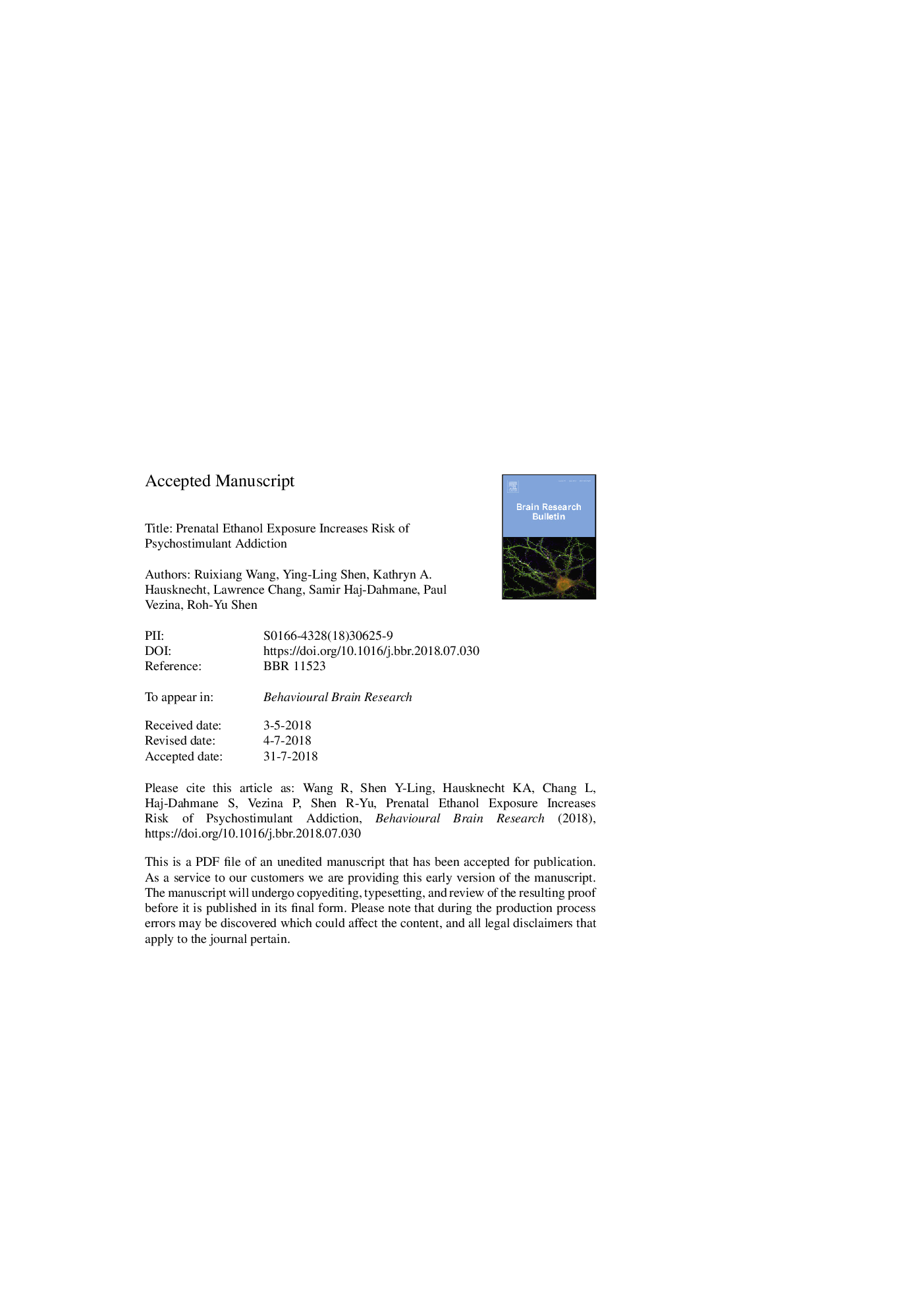| Article ID | Journal | Published Year | Pages | File Type |
|---|---|---|---|---|
| 8952982 | Behavioural Brain Research | 2019 | 42 Pages |
Abstract
Prenatal ethanol exposure (PE) causes many cognitive and behavioral deficits including increased drug addiction risk, demonstrated by enhanced ethanol intake and behavioral phenotypes associated with addiction risk. Additionally, preclinical studies show that PE persistently changes the function of dopaminergic neurons in the ventral tegmental area, a major neural substrate for addiction, and alters these neurons' responses to psychostimulants. Accordingly, PE could also lead to increased risk of addiction to drugs of abuse, other than ethanol. In the present study, addiction risk was examined utilizing paradigms of amphetamine conditioned place preference (CPP) and intravenous self-administration. Ethanol was administered to pregnant dams via intragastric gavage (6â g/kg, during gestational days 8-20). Behavioral tests were conducted in adult male offspring. Amphetamine at a low dose (0.3 âmg/kg, i.p.) induced CPP in PE but not control rats, whereas at a higher dose (0.6â mg/kg, i.p.) both groups acquired CPP. There was no group difference in amphetamine-induced CPP reinstatement. Furthermore, PE rats self-administered more amphetamine at a low dose (0.02 âmg/kg/infusion) than controls, while no group differences were observed at a higher dose (0.1â mg/kg/infusion). Rats with PE also exhibited greater reactivity to contextual drug cues after extended abstinence and amphetamine-induced reinstatement of drug seeking. These results support that PE persistently leads to increased psychostimulant addiction risk later in life, manifested in many elements of addictive behavior following limited psychostimulant exposure. The observations provide insights into prevention strategies for drug addiction in individuals with fetal alcohol spectrum disorders.
Keywords
Related Topics
Life Sciences
Neuroscience
Behavioral Neuroscience
Authors
Ruixiang Wang, Ying-Ling Shen, Kathryn A. Hausknecht, Lawrence Chang, Samir Haj-Dahmane, Paul Vezina, Roh-Yu Shen,
